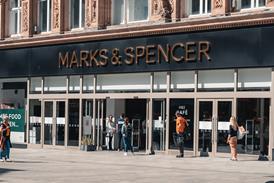Analysis: Can anyone take M&S’s lingerie crown?
By Becky Waller-Davies2016-10-31T11:02:00

Marks & Spencer may have been in the fashion doldrums for some time, but there’s one area that it continues to dominate – lingerie.
Already have an account? Sign in here
Want to read more?
Register for LIMITED guest access
Register now© William Reed Ltd 2025. All rights reserved.
Registered Office: Broadfield Park, Crawley RH11 9RT. Registered in England No. 2883992. VAT No. 644 3073 52.
Website Terms | Privacy Notice | Cookie Statement | Cookie Preferences
Registered Office: Broadfield Park, Crawley RH11 9RT. Registered in England No. 2883992. VAT No. 644 3073 52.
Website Terms | Privacy Notice | Cookie Statement | Cookie Preferences
Site powered by Webvision Cloud



















